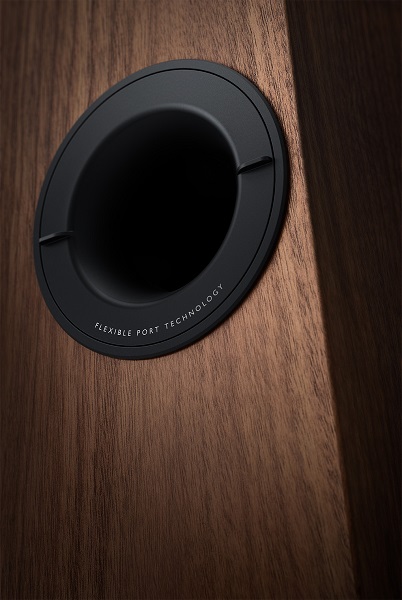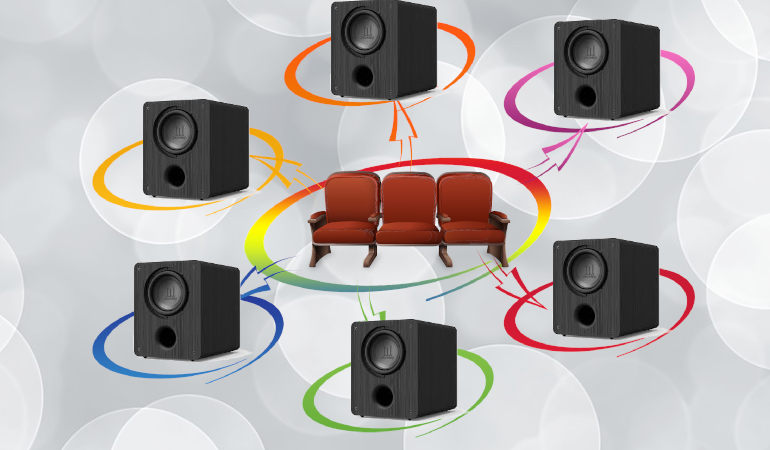Why Can I Localize My Subwoofer?
The common advice from experts and enthusiasts alike is to set the crossover on your AV receiver to 80Hz. There are a lot of rationales but the main one is that sounds that are 80Hz or lower are non-localizable. Non-localizable means that you can’t tell where the sounds are coming from in your room. “But,” you sputter, “I CAN tell where my subwoofer is! I’ve even set the crossover lower, and I can STILL tell!” Being able to localize your subwoofer is a problem. It means that those lowest notes, which should blend seamlessly into the other sounds, are now directional. But why? And what can you do about it?
Author’s Note: These explanations are taken, in part, from a presentation done by Todd Welti. Check out an interview with him about subwoofers here and see the full PowerPoint presentation (PDF) here.
Reason 1: Port Noise
If you are able to localize your subwoofer, one of the main culprits is port noise. If you have a ported subwoofer that is too small for your room, poorly designed, or turned up too loud, the air moving in and out of the port(s) will make noise. The sounds you are localizing are not the bass below 80Hz, but the port noise that is considerably higher in the frequency range.
Solution
The “real” solution is to get a bigger subwoofer. No, you don’t have to forgo a ported option. Ported subwoofers work very well which is why they are so many of them out there. The key is to get one that is well-designed and is the proper size for your room. If you bought based on price (cheapest out there) or footprint (rather than output), then your subwoofer either is distorting (poor quality) or being overdriven (too small for the space).
The second and less expensive solution is to turn it down until the port noise goes away. Unfortunately, so will all your bass.

Reason 2: Distortion
While this may sound like a rehash of Reason 1, distortion can happen with nearly any subwoofer. Buy a great subwoofer and max out the volume and you are likely to hear distortion. Distortion is when the subwoofer starts to make noises unrelated to the signal. This can happen mechanically as parts are pushed past their limits or when the cone of the driver starts to bend under the load. Poorly designed subwoofers will do this at low volume but well-designed and powerful ones can as well, usually at much higher volume.
Solution
See solution for Reason 1.
Reason 3: It’s All In Your Mind
A while ago, I asked my kids which bell peppers they liked the best – red, yellow, or orange. They all had a preference. Then I asked them to close their eyes as I fed them pieces. As you might expect, they couldn’t tell them apart. The same is true of many things in audio.
If you know where you placed your subwoofer, your brain will try and convince you that the sounds are coming from that speaker. If the subwoofer in question is in your field of view, the effect is stronger. Many times people are convinced they can localize their subwoofer. If they were to close their eyes, spin in a circle until they didn’t know what direction they were facing, and then played content would they be able to localize their subwoofer? Probably not. But convincing them that this is the case is almost impossible. Just like the sound effects of a punch makes us “see” the punch landing, trying to convince ourselves that we can’t localize our subwoofers is almost impossible.
Solution
The easiest solution is to move your subwoofer. Sometimes it is enough just to move it farther away. The distance can sometimes reset our brains into thinking we can’t localize the sound anymore. You can try hiding the subwoofer in some way. That can sometimes help. What has worked for me is getting a second subwoofer. With one subwoofer, I was never quite sure I wasn’t able to localize the sound. When I added a second, suddenly the bass became omnidirectional. Logically, I know that it was always non-localizable. But in my smallish home theater, the second subwoofer really convinced my brain that I couldn’t localize the sound.
Reason 4: Not All Crossovers are Created Equal
If you are using the crossover built into your AV receiver, this is likely not your problem. But if you are someone that is a tinkerer and has access to gear that allows you to adjust the slope of your crossover, then you might have an issue. This is also common with audiophile gear that has weird crossover slopes. If your crossover is low order or is having the subwoofer play notes far too high, you could, in truth, be localizing your subwoofer.
Crossovers are not brick walls. Your subwoofer will play notes higher than the crossover value and your speakers will play notes that are lower. If a weird crossover slope is having your sub play notes much higher than 80Hz, then you might be localizing it. Also, if the acoustics of your room are boosting your subwoofer output at notes higher than 80Hz, you could be localizing those sounds. Neither is common, but it can happen.
Solution
If you are adjusting your subwoofer crossover slope manually and suspect that is the problem, change the slope back to something more normal (24dB per octave). If you suspect your room is boosting frequencies, you have a couple of options. Adding acoustical treatments is possible, but absorbing notes that low is difficult. Your best bet is to lower the crossover value in your AV receiver so that your subwoofer isn’t playing those higher notes that are being boosted. Moving your subwoofer, adding a second sub, and changing your seating location all have the potential to help. Since this is the least likely culprit, we don’t really feel the need to expound. But if you do suspect this is your issue, let us know in the comments below. We’ll try to help!


